Firebush: Grow & Care for Hamelia Patens
Written by Iris
Jan 29 2023
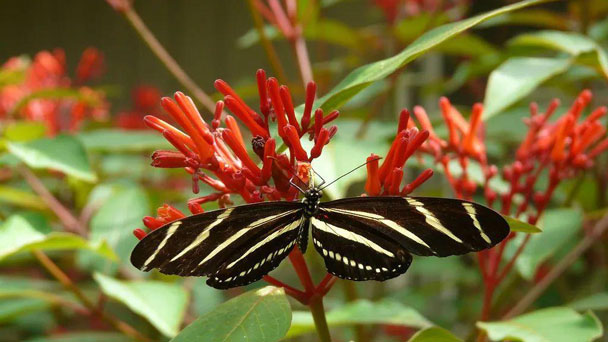
Firebush, also known as Hamelia Patens, is a large woody shrub native to the southern United States. Firebush (Hamelia Patens) can grow up to 15 feet (4.5 meters) tall, but it can also remain smaller. It grows quickly, growing a few feet in its first growing season. Firebush (Hamelia Patens) is a favorite plant in many southern states, such as Florida, because it is native and easy to grow, especially because it produces gorgeous flowers from spring through fall.
If you're desiring to grow firebush in a container, you can plant year-round. However, those living in colder locations in the state should bring the container into a warm and protected location during winter if you don’t want the plant to die to the ground once winter's cold temperatures strike.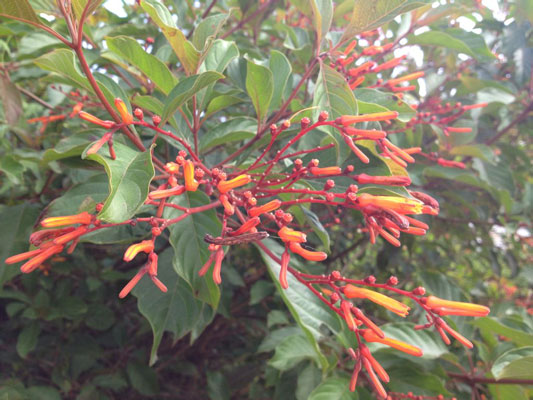
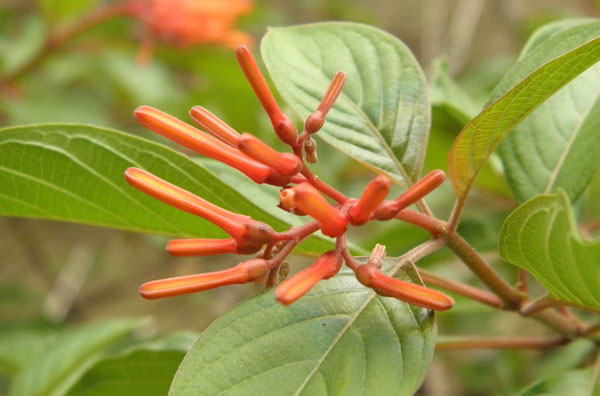
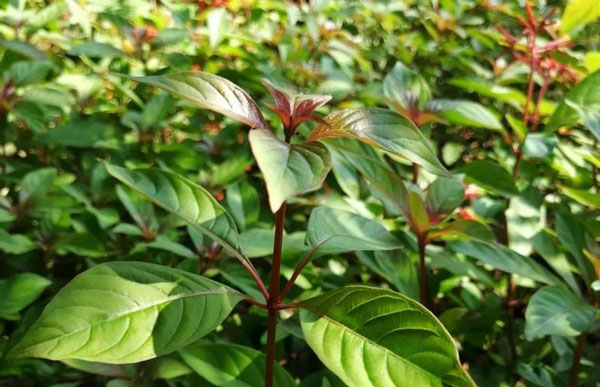
Always use sharp, clean tools when pruning. There are many tools available depending on the job. Hand shears, pruners, and loppers are ideal for most shrubs. Pole pruners and tree saws are better for large, mature shrubs or trees. If a tree is so large that it can't be safely pruned with a pole pruner, it is best to call in a professional tree service.
As for diseases, in the middle of summer, the bush is infected with three kinds of diseases. These are:
Gray mold: disease caused by a fungal infection that leaves a powdery residue on leaves. Sometimes you see it on the stem as well. It is best to remove symptomatic leaves or branches.
Root rot: The cause of this problem is usually man-made. If plants are overwatered or without well-drained soil, the accumulation of water can cause root rot. Symptoms include leaves with brown tips and wobbly stems. Stop watering the soil until the top 2 inches are dry.
Powdery mildew: Another fungal infection that leaves spots on leaves in the form of powder. You can treat it with neem oil or remove all infected leaves. If the infection is spreading, a microbicide may be a good solution.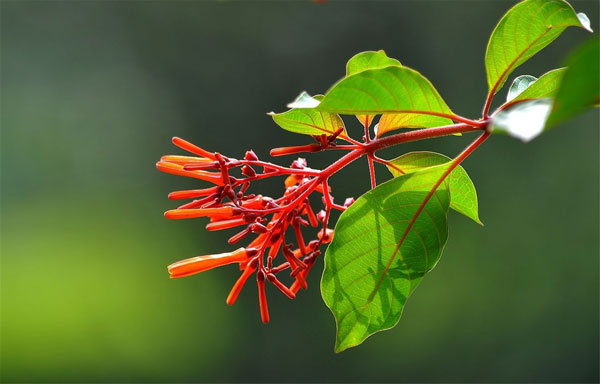
Where to Grow Firebush (Hamelia Patens)When to Grow Firebush (Hamelia Patens)How to Grow Firebush (Hamelia Patens)Firebush Propagation with SeedsFirebush Propagation with Stem CuttingsHow to Care for Firebush (Hamelia Patens)Firebush LightingFirebush Soil CareFirebush WateringFirebush Temperature & Humidity CareFirebush Fertilizer CareFirebush Pruning CareFirebush Pests & Diseases CareFirebush (Hamelia Patens) FAQHow Tall does Firebush Get?How Fast does Firebush Plant Grow?Is a Firebush Poisonous?
Where to Grow Firebush (Hamelia Patens)
You can plant a Firebush plant preferably outdoors, in pot or in ground at a spot receiving below growing conditions for the plant- Direct bright sunlight for more than 6 hours a day.
- Soil should be nutrient rich and well drained.
- Apply Water when soil (1-2 inch) feels dry to touch.
When to Grow Firebush (Hamelia Patens)
Although firebush thrives in all areas of Florida, where you live decides when the best time to plant the shrub into the landscape is. Those living in South Florida where temperatures are warm year-round can plant firebush into the landscape nearly all year.- Area Planting Dates
- North Florida Apr – Sep
- Central Florida Apr – Sep
- South Florida Feb – Dec
If you're desiring to grow firebush in a container, you can plant year-round. However, those living in colder locations in the state should bring the container into a warm and protected location during winter if you don’t want the plant to die to the ground once winter's cold temperatures strike.
- Also Read: Does Firebush Attract Hummingbirds

How to Grow Firebush (Hamelia Patens)
Firebush (Hamelia Patens) plant may be propagated with seeds and cuttings.Firebush Propagation with Seeds
- Collect pods and remove the seeds once they are dry.
- Moisten the peat in seedling trays and sow them.
- Place the tray indoors, in an area getting full sunlight.
- Germination being 3 weeks later.
- Once the seedlings are big enough to handle, move them to tier permanent location and with good growing conditions, you will notice plenty of orange-red flowers soon enough.
Firebush Propagation with Stem Cuttings
- Obtain cuttings about 6 inches long with three to four leaves.
- Treat with indolbuteric acid if the cutting is not from a commercial nursery by dipping the cutting for two to three seconds in a 1-to-20 strength treatment. Cuttings from commercial nurseries are generally pre-treated.
- Place the cutting into perlite or sand by digging a shallow hole with a trowel.
- Place the cutting in full sun in a warm environment. If the temperature dips below 85 degrees Fahrenheit, place the cuttings on a plant warming pad to maintain the bottom temperature of the cuttings for best results. While varying temperatures won't prevent the cutting from rooting, Dr. Jerry Parsons, a horticulturist in Texas, found that temperatures between 85 and 101 degrees Fahrenheit ensured healthier and stronger growth in the root system.
- Water daily to keep the soil well-hydrated.
- Transition the cuttings to the outdoors over a one-week period when the risk of frost has passed Each day, take the cuttings out, first to a shaded area and then to an increasingly sunny area. Each night, bring them back indoors.
- Plant outdoors in a location well-suited to growing a tall hedge. While firebush can grow in shade, it grows and flowers in full sun, providing a full season of orange-red flowers and fruit and growing quickly.

How to Care for Firebush (Hamelia Patens)
Firebush Lighting
Though firebush (Hamelia Patens) can tolerate partial shade, it prefers the warmth of full sunlight, at least six or eight hours a day. It's believed that the more sunlight the plant gets, the more plentiful its blooms will be.Firebush Soil Care
Firebush has the benefit of growing easily in a variety of different soil conditions. That being said, it prefers a mixture that's on the drier side, and whatever type of soil you plant it in should be especially well-draining, as the plant can be prone to root rot. Additionally, soil pH isn't of much importance to firebush—it can thrive in a blend that ranges from neutral to acidic.Firebush Watering
In general, Firebush (Hamelia Patens) won't require a lot of watering. Once it establishes, it becomes almost self-sufficient as its roots seek water in the deep soil. That doesn't mean you should forget about irrigation altogether. You should always strive to keep the well-drained soil moist especially in the dog days of summer. Don't overwater it, however. This is a hardy bush that can handle drought but not soaked soil. You can use a well-balanced fertilizer in the early spring to encourage flowering.
Firebush Temperature & Humidity Care
Firebush (Hamelia Patens) prefers an ideal temperature 15 degrees Fahrenheit. It can withstand very cold temperature up to -1 degree Celsius.Firebush Fertilizer Care
Established trees should be fertilized every 2-3 years. Feed in early spring when plants start growing. Fertilizers are available in many forms: granulated, slow-release, liquid feeds, organic or synthetic. Determine which application method is best for the situation and select a product designed for trees and shrubs, or go with a nutritionally balanced, general-purpose formula such as 10-10-10. Always follow the fertilizer package directions for application rates and scheduling. Over-fertilizing plants or applying at the wrong time during the growing season can result in plant injury.Firebush Pruning Care
Firebush Pruning may be needed to remove dead branches, encourage bushier growth, promote more flowers, or maintain a specific size or shape. Dead branches should be removed close to the trunk, flush with the bark. When pruning to control a plant's size or shape, cuts should be made just above a leaf bud and at a slight angle. This bud will be where the new growth sprouts. Many shrubs can be regularly sheared to keep them shaped as a hedge, edging or formal foundation planting.Always use sharp, clean tools when pruning. There are many tools available depending on the job. Hand shears, pruners, and loppers are ideal for most shrubs. Pole pruners and tree saws are better for large, mature shrubs or trees. If a tree is so large that it can't be safely pruned with a pole pruner, it is best to call in a professional tree service.
Firebush Pests & Diseases Care
Like most other plants that grow in the tropics, firebushes (Hamelia Patens) are known to attract unwelcome guests. These often include common garden species aphids, thrips, starscream, plant scales, mealworms and mealybugs. Each one is enough to do a lot of damage to your beautiful firebush. You can remove them by using insecticides or organic neem oil.As for diseases, in the middle of summer, the bush is infected with three kinds of diseases. These are:
Gray mold: disease caused by a fungal infection that leaves a powdery residue on leaves. Sometimes you see it on the stem as well. It is best to remove symptomatic leaves or branches.
Root rot: The cause of this problem is usually man-made. If plants are overwatered or without well-drained soil, the accumulation of water can cause root rot. Symptoms include leaves with brown tips and wobbly stems. Stop watering the soil until the top 2 inches are dry.
Powdery mildew: Another fungal infection that leaves spots on leaves in the form of powder. You can treat it with neem oil or remove all infected leaves. If the infection is spreading, a microbicide may be a good solution.

Firebush (Hamelia Patens) FAQ
How Tall does Firebush Get?
In zones 9 and above where these plants grow as evergreens, they can grow to over 15 feet (4.6 m) tall. In colder areas where the plant grows as an annual, 3 to 4 feet (0.9 to 1.2 m) is more likely in a single growing season.How Fast does Firebush Plant Grow?
Firebush (Hamelia Patens) is a fast-growing shrub that can grow over 3 feet (0.9 m) in a single year.Is a Firebush Poisonous?
For those who worry about poisonous plants in the landscape, the nontoxic nature of Firebush (Hamelia Patens) will come as a welcome relief. In fact, a syrup derived from the fruit of Firebush is used as a remedy for diarrhea in the West Indies.Latest Updated
- Benefits of Bugleweed - 7 Science-backed Health Benefits
- Bugleweed Dangers & Side Effects - Is It Poisonous?
- How to Plant Evergreen Trees - What You Should Know
- When to Plant Evergreens - Grow Guide for Evergreen Trees
- 12 Wonderful Evergreen Shrubs for Your Garden
- 12 Popular Evergreen Plants with Pictures for Beginners
- When And How To Prune A Lilac Bush Like a Pro
- How to Grow & Care for Lilac Vine (Hardenbergia Violacea)
- Japanese Lilac Tree (Syringa Reticulata) Care & Propagation Guide
- Shumard Oak Pros and Cons - What to Know
Popular Articles
- Winter maintenance of Antirrhinum Majus
- How to Grow Terminalia Mantaly Tree
- How to Grow and Care for Crossostephium Chinense
- How to grow Antirrhinum Majus in spring
- Peristeria Elata (Dove Orchid) Profile: Info & Care Guide
- Underwatered Snake Plant (Sansevieria Trifasciata) - Signs And How To Fix
- How to Care for Brazilian Jasmine Plant (Mandevilla Sanderi)
- How to Grow & Care for Graptopetalum Purple Delight in Summer
- Rosa Chinensis (China Rose): Plant Growing & Care Tips
- How to Care for Baby Sun Rose (Aptenia Cordifolia)